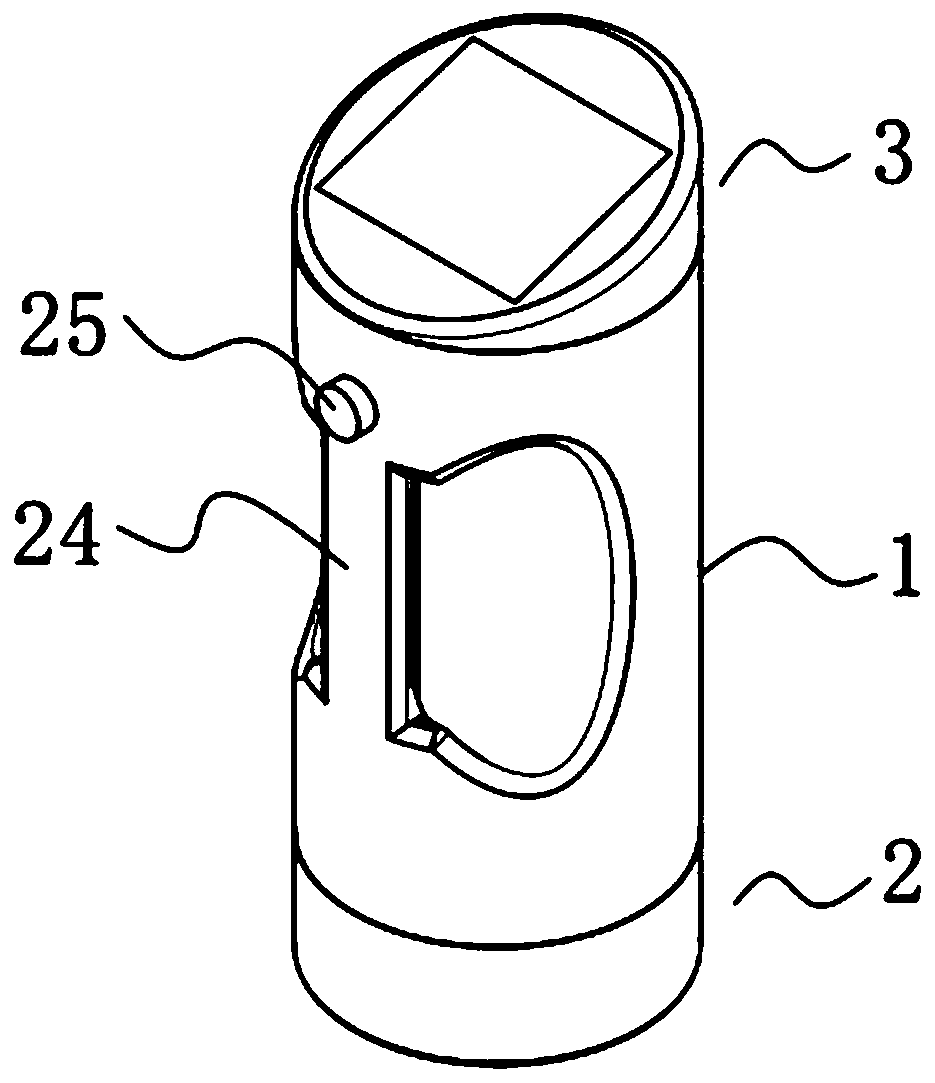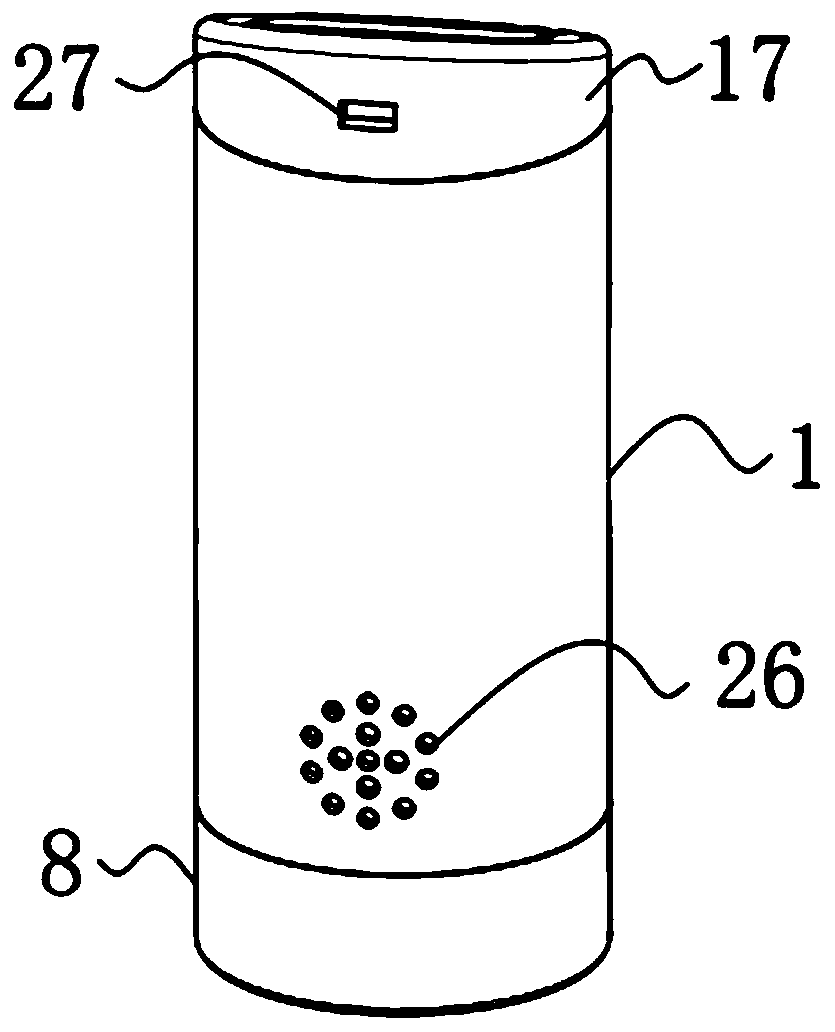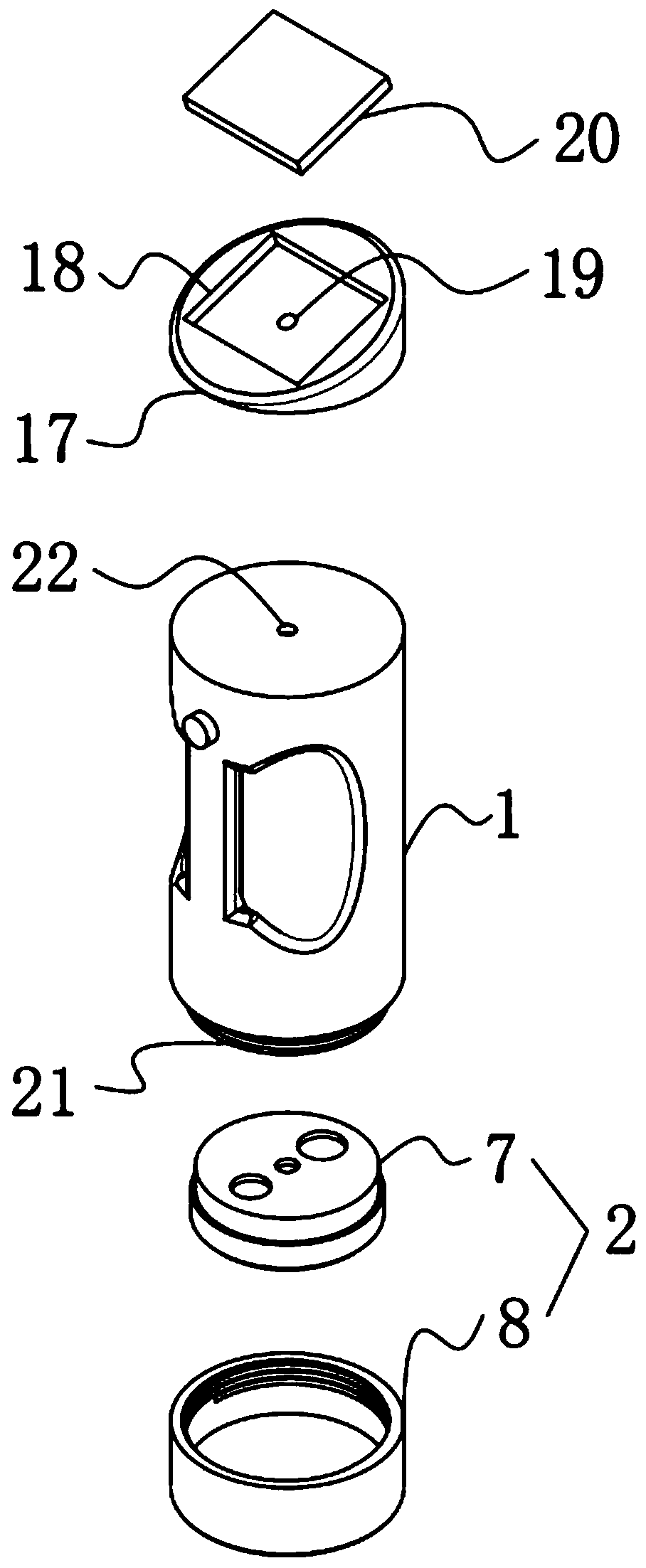Pressure damage detector
A detector and pressure technology, applied in the field of medical devices, can solve problems that are unfavorable for patients to cure pressure injuries, provide effective treatment methods, analyze disadvantages in depth, and prolong recovery time, so as to avoid inaccurate collection of data and data. Accurate and shortened recovery time
- Summary
- Abstract
- Description
- Claims
- Application Information
AI Technical Summary
Problems solved by technology
Method used
Image
Examples
Embodiment 1
[0058] A pressure injury detector such as figure 1 , 5 As shown in and 7, it includes a cylindrical housing 1, the bottom end of the cylindrical housing 1 is provided with a detection part 2, and the upper end of the cylindrical housing 1 is provided with a display part 3, and the inside of the cylindrical housing 1 is also A control unit 5 is provided;
[0059] Such as image 3 , 9 As shown in and 10, the detection part 2 includes a transparent plexiglass end cover 8, a mounting base 7, an infrared detector 14 and a camera 12, and the transparent plexiglass end cover 8 is screwed to the bottom of the cylindrical shell 1 end, the mounting seat 7 is clamped on the bottom port of the cylindrical shell 1, and the mounting seat 7 is located inside the transparent plexiglass end cover 8, and the inside of the mounting seat 7 is provided with a second A mounting hole 11 and a second mounting hole 9, the infrared detector 14 is fixedly mounted inside the first mounting hole 11, a...
Embodiment 2
[0084] The difference from Example 1 is that a protective layer is also provided on the outer surface of the cylindrical shell 1, and the protective layer is prepared by the following method:
[0085] Take the following raw materials and weigh them by weight: 16 parts of epoxy resin, 18 parts of acrylic emulsion, 12 parts of copper oxide powder, 12 parts of nano-silver powder, 8 parts of titanium dioxide powder, 9 parts of calcium carbonate powder, 2 parts of alcohol ester twelve, three 3 parts of ethanolamine, 1 part of emulsified silicone oil and 30 parts of water;
[0086] S1. Add the weighed acrylic emulsion, alcohol ester dodeca, triethanolamine, emulsified silicone oil and water into the mixer and stir for 25min at a stirring speed of 600r / min to prepare a mixed solution;
[0087] S2, adding epoxy resin, copper oxide powder, nano-silver powder, titanium dioxide powder and calcium carbonate powder into a pulverizer for pulverization until the particle diameter of the mate...
Embodiment 3
[0093] The difference with embodiment 2 is the preparation of protective layer, and its specific preparation method is as follows:
[0094] Take the following raw materials and weigh them by weight: 19 parts of epoxy resin, 21 parts of acrylic emulsion, 14 parts of copper oxide powder, 14 parts of nano-silver powder, 10 parts of titanium dioxide powder, 11 parts of calcium carbonate powder, 3 parts of alcohol ester twelve, three 4 parts of ethanolamine, 2 parts of emulsified silicone oil and 40 parts of water;
[0095] S1. Add the weighed acrylic emulsion, alcohol ester dodeca, triethanolamine, emulsified silicone oil and water into the mixer and stir for 30min at a stirring speed of 650r / min to prepare a mixed solution;
[0096] S2, adding epoxy resin, copper oxide powder, nano-silver powder, titanium dioxide powder and calcium carbonate powder into a pulverizer for pulverization until the particle diameter of the material is not greater than 100nm to obtain a mixed powder ma...
PUM
 Login to View More
Login to View More Abstract
Description
Claims
Application Information
 Login to View More
Login to View More - R&D
- Intellectual Property
- Life Sciences
- Materials
- Tech Scout
- Unparalleled Data Quality
- Higher Quality Content
- 60% Fewer Hallucinations
Browse by: Latest US Patents, China's latest patents, Technical Efficacy Thesaurus, Application Domain, Technology Topic, Popular Technical Reports.
© 2025 PatSnap. All rights reserved.Legal|Privacy policy|Modern Slavery Act Transparency Statement|Sitemap|About US| Contact US: help@patsnap.com



